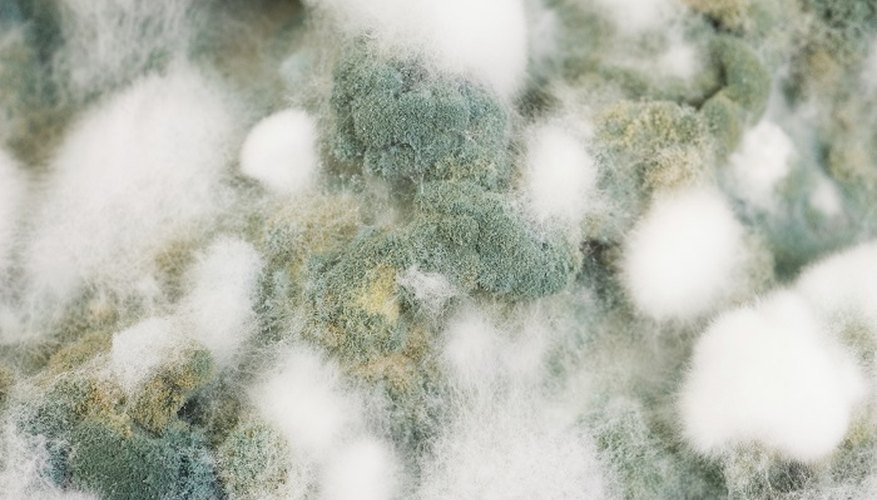Mould stains on your pine furniture occur as a result of the development of mould spores. When exposed to warm, damp conditions, wood furniture becomes stained and smelly as the mould grows. Left unattended, these living organisms can wreak havoc on your furniture. When done correctly, mould removal from wood furniture removes the stains -- and their odours -- without harming the finish or paint.
Move the pine furniture outdoors or open windows to help dry the surface. Brush visible mould spores off the furniture with a scrubbing brush.
Pour four capfuls of disinfectant cleaner into a bucket and add 4.5 litres (1 gallon) of warm water. Wet a sponge with the solution and scrub the entire surface of the pine furniture. Rinse your sponge frequently with water and apply more disinfectant cleaner to wash the mould stains off the pine.
- Mould stains on your pine furniture occur as a result of the development of mould spores.
- Wet a sponge with the solution and scrub the entire surface of the pine furniture.
Wet a clean cloth with water and wring out the excess moisture. Wipe off your pine furniture to remove the cleansing solution and any remaining mould spores. Allow the furniture to air-dry completely.
Sprinkle baking soda on the pine furniture to treat lingering, musty mould smells. Leave the baking soda on the surface overnight. Vacuum the surface of your furniture to remove the baking soda.
TIP
Alternatively, substitute white vinegar for disinfectant cleaner to kill and remove mould spores. If the pine furniture is unfinished, you can also use a diluted ammonia solution.
Store pine furniture in a dry location when not in use to prevent mould from developing.
Use a dehumidifier in rooms that remain damp. Controlling the humidity level in a room prevents mould from developing.
